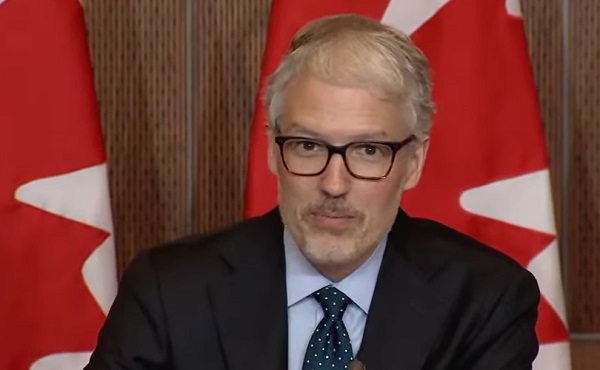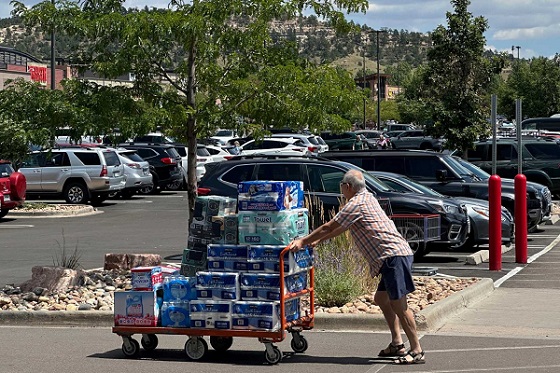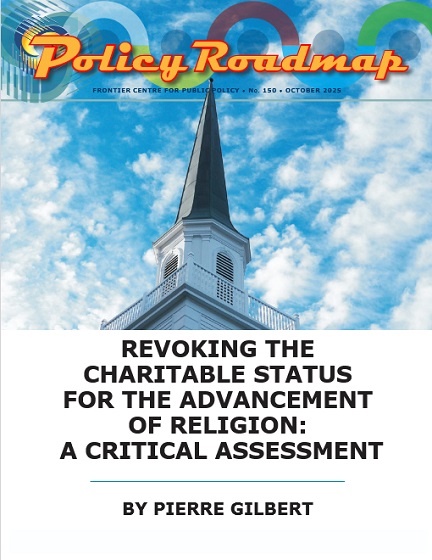Uncategorized
Cyclone Idai deaths could exceed 1,000 as need for aid grows

BEIRA, Mozambique — As flood waters began to recede in parts of Mozambique on Friday, fears rose that the death toll could soar as bodies are revealed.
The number of deaths could be beyond the 1,000 predicted by the country’s president earlier this week, said Elhadj As Sy, the secretary-general of the International Federation of Red Cross and Red Crescent Societies
In addition to worries about the number of dead, As Sy told The Associated Press that the humanitarian needs are great.
“They are nowhere near the scale and magnitude of the problem,” As Sy said. “And I fear we will be seeing more in the weeks and months ahead, and we should brace ourselves.”
Thousands of people were making a grim voyage toward the city of Beira, which although 90
Some walked along roads carved away by the raging waters a week ago. Others, hundreds of them, were ferried in an extraordinary makeshift effort by local fishermen who plucked stranded people from small islands.
Helicopters set off into the rain for another day of efforts to find people clinging to rooftops and trees.
For those who reach Beira with their few remaining possessions, life is grim. Waterborne diseases are a growing concern as water and sanitation systems were largely destroyed.
“The situation is simply horrendous, there is no other way to describe it,” As Sy said after touring transit camps for the growing number of displaced. “Three thousand people who are living in a school that has 15 classrooms and six, only six, toilets. You can imagine how much we are sitting on a water and sanitation ticking bomb.”
What moved him the most was the number of children without their parents, separated in the chaos or newly orphaned.
“Yesterday (we) did a reconnaissance and we found another (inland) lake. So we are still very early in the phase of identifying what the scope of this is, for who is affected and how many are lost,” Emma Batey,
Luckily, the area is a national park and less densely populated, she said. Still, “there were devastatingly small amounts of people.”
She estimated that another 100 people would be airlifted out on Friday: “We’re only picking up those in absolute dire need.”
No one is still clinging to roofs and trees, she said.
Pedro Matos, emergency
“If islands are big enough, we can even see smoke coming out, meaning that they’re cooking,” he said, adding that it remains “super difficult” to estimate a death toll or even the number of missing.
For residents of Beira, life staggered on. People salvaged the metal strips of roofs that had been peeled away like the skin of a fruit. Downed trees littered the streets. And yet there were flashes of life as it used to be. White wedding dresses stood pristine behind a shop window that hadn’t shattered.
Zimbabwe was also affected by the cyclone and as roads began to clear and some basic communications were set up, a fuller picture of the extent of the damage there is beginning to emerge.
The victims are diverse: a mother buried in the same grave with her child, headmasters missing together with dozens of school students, illegal gold and diamond miners swept away by raging rivers and police officers washed away with their prisoners.
The Ministry of Information said 30 pupils, two headmasters and a teacher are missing.
Zimbabwean President Emmerson Mnangagwa said Thursday that officers and prisoners were washed way.
In Mutare, fear gripped residents even though they are more than 140
Maina Chisiriirwa, a city resident, said she buried her son-in-law, who had left the city to go to Chiadzwa diamond fields to mine illegally.
“There are no jobs and all he wanted was to feed his family. He was with his colleagues. They thought it would be easier to mine since the rains would keep the guards and the police away from patrolling,” Chisiriirwa said. His colleagues survived but her son-in-law was swept away, she said.
A man who
In downtown Beira, a sidewalk is Marta Ben’s new home. The 30-year-old mother of five clutched a teary child to her hip as she described the sudden horror of the storm.
“I’ve never seen anything like this,” she said, barefoot, a cooking pot bubbling nearby. “We were not warned. Suddenly the roof flew away.”
She said she and
Now they claim a patch of sidewalk among others newly homeless. They beg passers-by for aid. They say they have received nothing from the government or aid groups, “not even bread.”
And yet she knows others have suffered more. She described seeing the ragged people who had been ferried by fishermen from communities outside the city. “They looked sad,” she said.
The survivors from inland Mozambique arrived by the boatload, some 50 at a time, mostly children, witnesses said.
“Some were wounded. Some were bleeding. Some had feet white like flour for being in the water for so long,” said Julia Castigo, who watched them arrive Friday morning.
The 24-year-old said the cyclone came as a surprise to her, her husband and two children. It blew away the roof, the door, the windows. Water filled the home.
She looked resigned. “We survived. We’re still here,” she said simply.
“The people didn’t even have clothes, nothing to cover them,” said Ignacio Dango, who watched them arrive on the beach. The 24-year-old boat builder said he saw sick, wounded and very young. “Like 5 years old.”
They came from Buzi, he said.
Residents of Beira muttered “Meu Dio!” (“My God” in Portuguese) as they went about the city and came across new scenes of destruction.
___
Farai Mutsaka reported from Mutare, Zimbabwe.
Cara Anna And Farai Mutsaka, The Associated Press
Uncategorized
New report warns WHO health rules erode Canada’s democracy and Charter rights

The Justice Centre for Constitutional Freedoms has released a new report titled Canada’s Surrender of Sovereignty: New WHO health regulations undermine Canadian democracy and Charter freedoms. Authored by Nigel Hannaford, a veteran journalist and researcher, the report warns that Canada’s acceptance of the World Health Organization’s (WHO) revised International Health Regulations (IHR) represents a serious erosion of national independence and democratic accountability.
The IHR amendments, which took effect on September 19, 2025, authorize the WHO Director-General to declare global “health emergencies” that could require Canada to follow directives from bureaucrats in Geneva, bypassing the House of Commons and the will of Canadian voters.
The WHO regards these regulations as “binding,” despite having no ability or legal authority to impose such regulations. Even so, Canada is opting to accept the regulations as binding.
By accepting the WHO’s revised IHR, the report explains, Canada has relinquished its own control over future health crises and instead has agreed to let the WHO determine when a “pandemic emergency” exists and what Canada must do to respond to it, after which Canada must report back to the WHO.
In fact, under these International Health Regulations, the WHO could demand countries like Canada impose stringent freedom-violating health policies, such as lockdowns, vaccine mandates, or travel restrictions without debate, evidence review, or public accountability, the report explains.
Once the WHO declares a “Pandemic Emergency,” member states are obligated to implement such emergency measures “without delay” for a minimum of three months.
Importantly, following these WHO directives would undermine government accountability as politicians may hide behind international “commitments” to justify their actions as “simply following international rules,” the report warns.
Canada should instead withdraw from the revised IHR, following the example of countries like Germany, Austria, Italy, Czech Republic, and the United States. The report recommends continued international cooperation without surrendering control over domestic health policies.
Constitutional lawyer Allison Pejovic said, “[b]y treating WHO edicts as binding, the federal government has effectively placed Canadian sovereignty on loan to an unelected international body.”
“Such directives, if enforced, would likely violate Canadians’ Charter rights and freedoms,” she added.
Mr. Hannaford agreed, saying, “Canada’s health policies must be made in Canada. No free and democratic nation should outsource its emergency powers to unelected bureaucrats in Geneva.”
The Justice Centre urges Canadians to contact their Members of Parliament and demand they support withdrawing from the revised IHR to restore Canadian sovereignty and reject blind compliance with WHO directives.
Uncategorized
CNN’s Shock Climate Polling Data Reinforces Trump’s Energy Agenda


From the Daily Caller News Foundation
As the Trump administration and Republican-controlled Congress move aggressively to roll back the climate alarm-driven energy policies of the Biden presidency, proponents of climate change theory have ramped up their scare tactics in hopes of shifting public opinion in their favor.
But CNN’s energetic polling analyst, the irrepressible Harry Enten, says those tactics aren’t working. Indeed, Enten points out the climate alarm messaging which has permeated every nook and cranny of American society for at least 25 years now has failed to move the public opinion needle even a smidgen since 2000.
Appearing on the cable channel’s “CNN News Central” program with host John Berman Thursday, Enten cited polling data showing that just 40% of U.S. citizens are “afraid” of climate change. That is the same percentage who gave a similar answer in 2000.
Dear Readers:
As a nonprofit, we are dependent on the generosity of our readers.
Please consider making a small donation of any amount here.
Thank you!
Enten’s own report is an example of this fealty. Saying the findings “kind of boggles the mind,” Enten emphasized the fact that, despite all the media hysteria that takes place in the wake of any weather disaster or wildfire, an even lower percentage of Americans are concerned such events might impact them personally.
“In 2006, it was 38%,” Enten says of the percentage who are even “sometimes worried” about being hit by a natural disaster, and adds, “Look at where we are now in 2025. It’s 32%, 38% to 32%. The number’s actually gone down.”
In terms of all adults who worry that a major disaster might hit their own hometown, Enten notes that just 17% admit to such a concern. Even among Democrats, whose party has been the major proponent of climate alarm theory in the U.S., the percentage is a paltry 27%.
While Enten and Berman both appear to be shocked by these findings, they really aren’t surprising. Enten himself notes that climate concerns have never been a driving issue in electoral politics in his conclusion, when Berman points out, “People might think it’s an issue, but clearly not a driving issue when people go to the polls.”
“That’s exactly right,” Enten says, adding, “They may worry about in the abstract, but when it comes to their own lives, they don’t worry.”
This reality of public opinion is a major reason why President Donald Trump and his key cabinet officials have felt free to mount their aggressive push to end any remaining notion that a government-subsidized ‘energy transition’ from oil, gas, and coal to renewables and electric vehicles is happening in the U.S. It is also a big reason why congressional Republicans included language in the One Big Beautiful Bill Act to phase out subsidies for those alternative energy technologies.
It is key to understand that the administration’s reprioritization of energy and climate policies goes well beyond just rolling back the Biden policies. EPA Administrator Lee Zeldin is working on plans to revoke the 2010 endangerment finding related to greenhouse gases which served as the foundation for most of the Obama climate agenda as well.
If that plan can survive the inevitable court challenges, then Trump’s ambitions will only accelerate. Last year’s elimination of the Chevron Deference by the Supreme Court increases the chances of that happening. Ultimately, by the end of 2028, it will be almost as if the Obama and Biden presidencies never happened.
The reality here is that, with such a low percentage of voters expressing concerns about any of this, Trump and congressional Republicans will pay little or no political price for moving in this direction. Thus, unless the polls change radically, the policy direction will remain the same.
David Blackmon is an energy writer and consultant based in Texas. He spent 40 years in the oil and gas business, where he specialized in public policy and communications.
-

 Agriculture1 day ago
Agriculture1 day agoIs the CFIA a Rogue Agency or Just Taking Orders from a Rogue Federal Government?
-
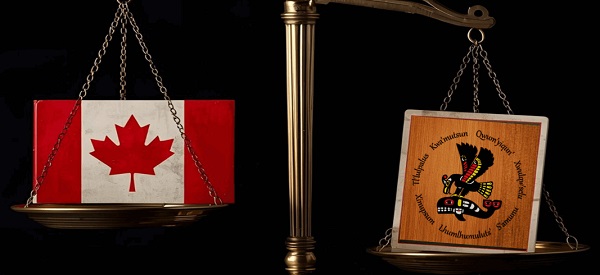
 Business2 days ago
Business2 days agoJudges are Remaking Constitutional Law, Not Applying it – and Canadians’ Property Rights are Part of the Collateral Damage
-
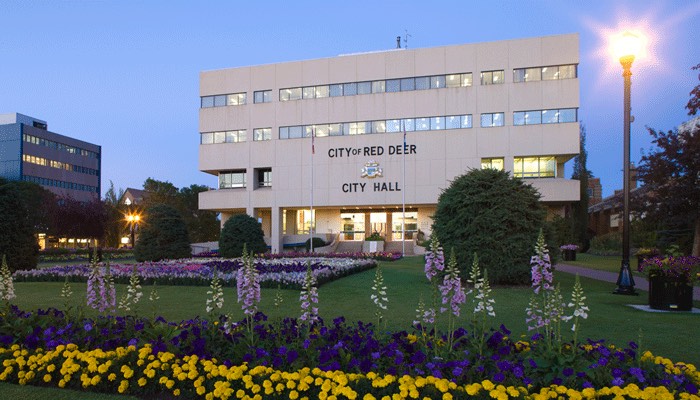
 Red Deer2 days ago
Red Deer2 days agoYour last minute election prep: Common Sense Red Deer talks to the candidates
-
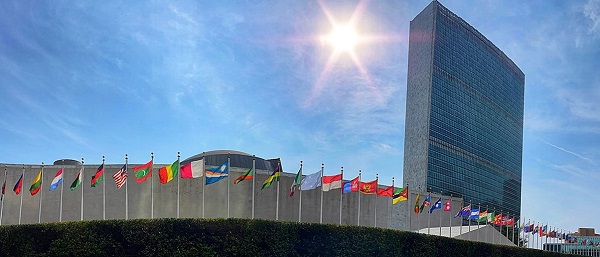
 Business2 days ago
Business2 days agoTrump Admin Blows Up UN ‘Global Green New Scam’ Tax Push, Forcing Pullback
-

 Business2 days ago
Business2 days agoTrump Blocks UN’s Back Door Carbon Tax
-
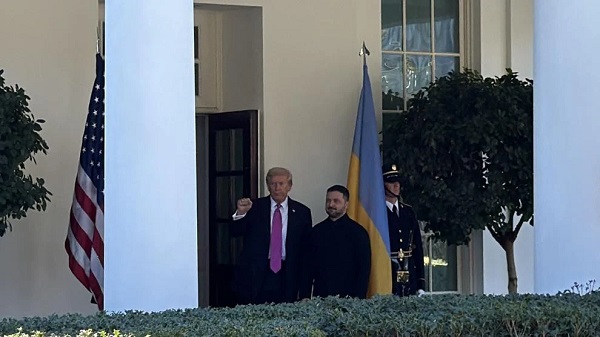
 Daily Caller2 days ago
Daily Caller2 days agoTrump urges Putin, Zelenskyy to make a ‘deal’
-

 espionage1 day ago
espionage1 day ago“Suitcase of Cash” and Secret Meeting Deepen Britain’s Beijing Espionage Crisis
-

 Energy7 hours ago
Energy7 hours agoMinus Forty and the Myth of Easy Energy
